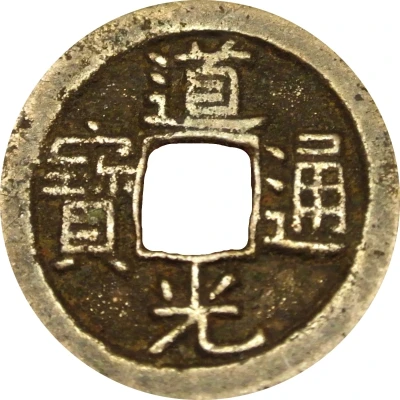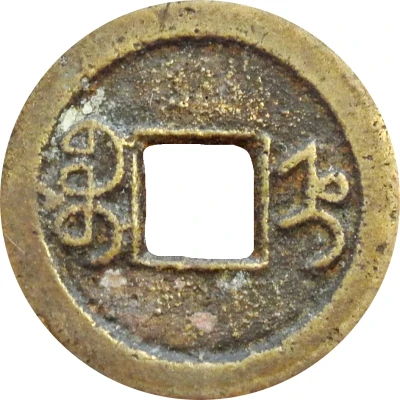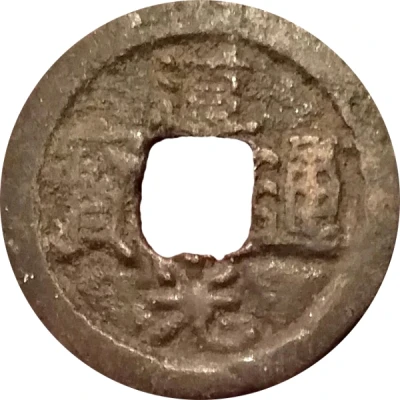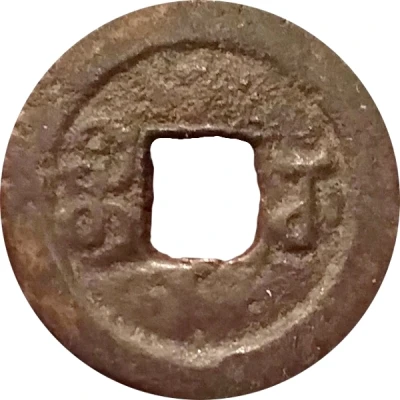
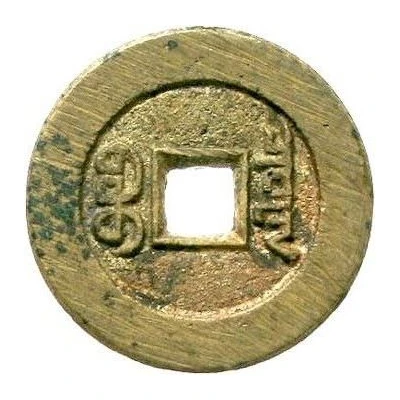

© Teutoburger Münzauktion
1 Cash - Daoguang Tongbao; Boo-chiowan; palace coin ND
| Brass | 8.45 g | 27 mm |
| Issuer | Empire of China |
|---|---|
| Emperor | Qing dynasty › Daoguang (道光帝) (1820-1850) |
| Type | Standard circulation coin |
| Years | 1821-1831 |
| Value | 1 Cash |
| Currency | Cash (621-1912) |
| Composition | Brass |
| Weight | 8.45 g |
| Diameter | 27 mm |
| Shape | Round with a square hole |
| Technique | Cast |
| Orientation | Medal alignment ↑↑ |
| Demonetized | Yes |
| Updated | 2024-10-04 |
| Numista | N#113924 |
|---|---|
| Rarity index | 67% |
Reverse
Two Manchu words (read vertically) separated by the hole.
Script: Mongolian / Manchu
Lettering: ᠪᠣᠣ ᠴᡳᠣᠸᠠᠨ
Translation: Boo-choiwan
Edge
Plain
Comment
The production of palace coins was ceased in 1831.Various types exist:
Type A: Large 光
Type B: Small 光
DocTongHead
DocTongDots
DocBooProt
Interesting fact
One interesting fact about the Standard circulation coin 1 Cash - Daoguang (Tongbao; Boo-chiowan; palace coin) ND (1821-1831) from Empire of China made of Brass weighing 8.45 g is that it was used as a form of currency during the Daoguang Emperor's reign, and it was the first coin to feature the emperor's name and title on the obverse side, which was a departure from the previous coins that featured only the reign title. This coin was also used as a means of exchange for the people, and it was an important symbol of the empire's economic power and influence.
